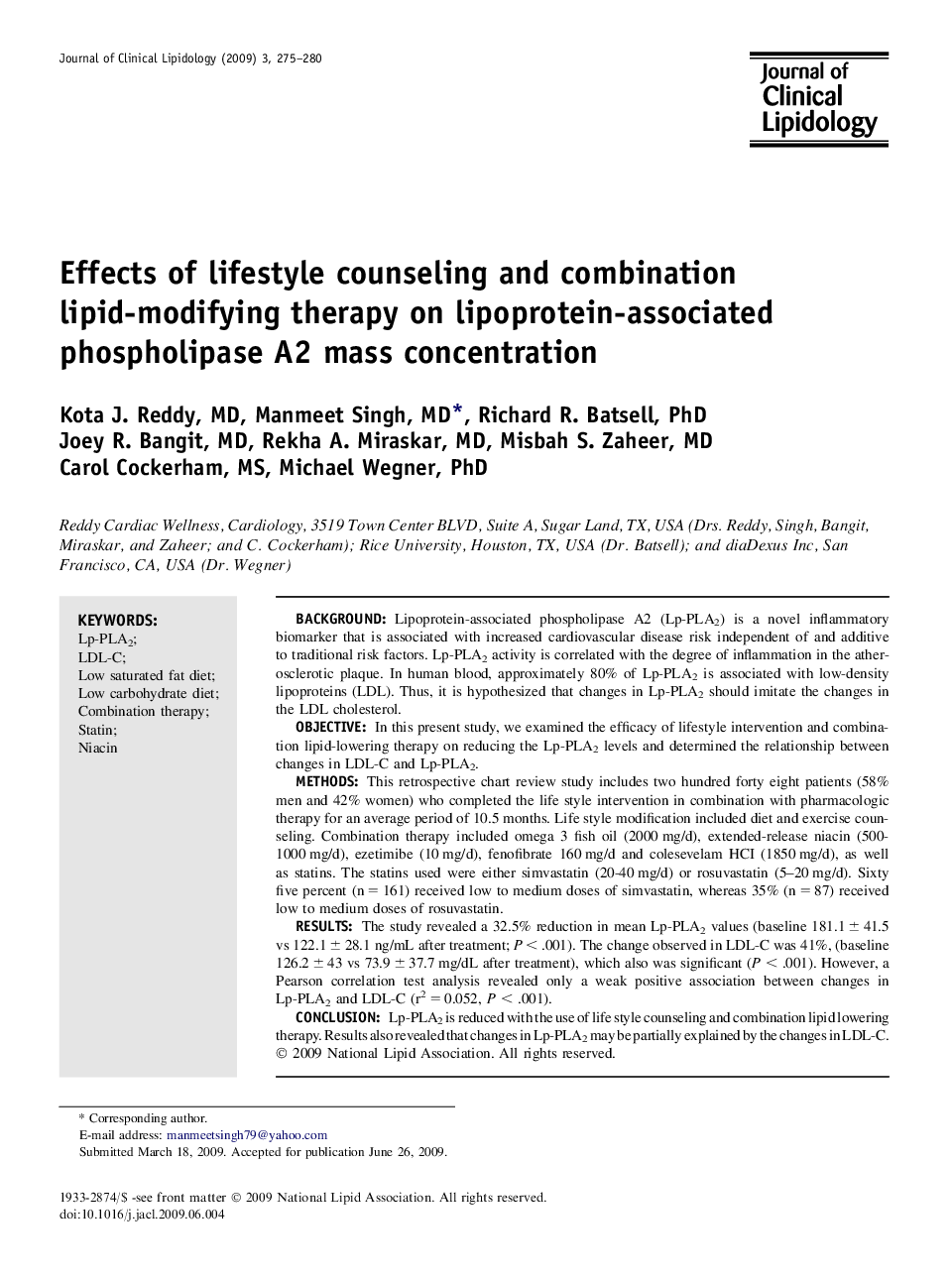| کد مقاله | کد نشریه | سال انتشار | مقاله انگلیسی | نسخه تمام متن |
|---|---|---|---|---|
| 2967118 | 1178829 | 2009 | 6 صفحه PDF | دانلود رایگان |

BackgroundLipoprotein-associated phospholipase A2 (Lp-PLA2) is a novel inflammatory biomarker that is associated with increased cardiovascular disease risk independent of and additive to traditional risk factors. Lp-PLA2 activity is correlated with the degree of inflammation in the atherosclerotic plaque. In human blood, approximately 80% of Lp-PLA2 is associated with low-density lipoproteins (LDL). Thus, it is hypothesized that changes in Lp-PLA2 should imitate the changes in the LDL cholesterol.ObjectiveIn this present study, we examined the efficacy of lifestyle intervention and combination lipid-lowering therapy on reducing the Lp-PLA2 levels and determined the relationship between changes in LDL-C and Lp-PLA2.MethodsThis retrospective chart review study includes two hundred forty eight patients (58% men and 42% women) who completed the life style intervention in combination with pharmacologic therapy for an average period of 10.5 months. Life style modification included diet and exercise counseling. Combination therapy included omega 3 fish oil (2000 mg/d), extended-release niacin (500-1000 mg/d), ezetimibe (10 mg/d), fenofibrate 160 mg/d and colesevelam HCI (1850 mg/d), as well as statins. The statins used were either simvastatin (20-40 mg/d) or rosuvastatin (5–20 mg/d). Sixty five percent (n = 161) received low to medium doses of simvastatin, whereas 35% (n = 87) received low to medium doses of rosuvastatin.ResultsThe study revealed a 32.5% reduction in mean Lp-PLA2 values (baseline 181.1 ± 41.5 vs 122.1 ± 28.1 ng/mL after treatment; P < .001). The change observed in LDL-C was 41%, (baseline 126.2 ± 43 vs 73.9 ± 37.7 mg/dL after treatment), which also was significant (P < .001). However, a Pearson correlation test analysis revealed only a weak positive association between changes in Lp-PLA2 and LDL-C (r2 = 0.052, P < .001).ConclusionLp-PLA2 is reduced with the use of life style counseling and combination lipid lowering therapy. Results also revealed that changes in Lp-PLA2 may be partially explained by the changes in LDL-C.
Journal: Journal of Clinical Lipidology - Volume 3, Issue 4, August 2009, Pages 275–280